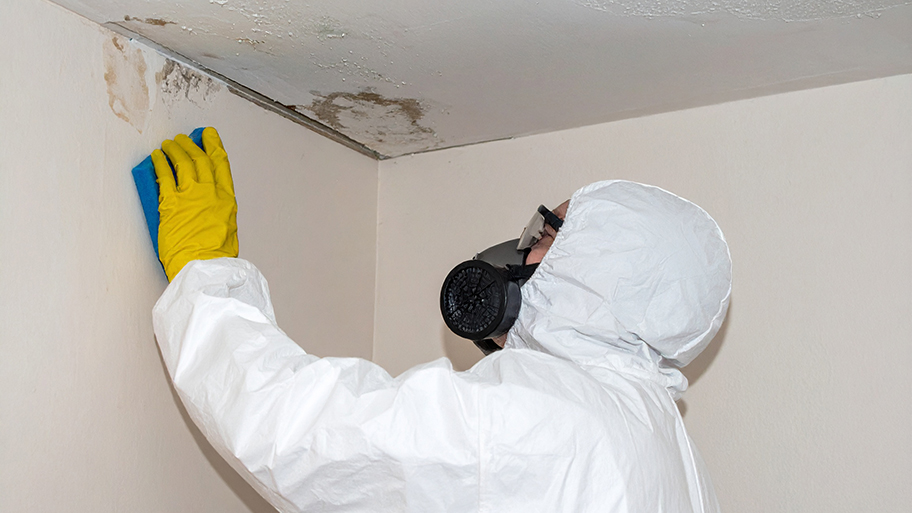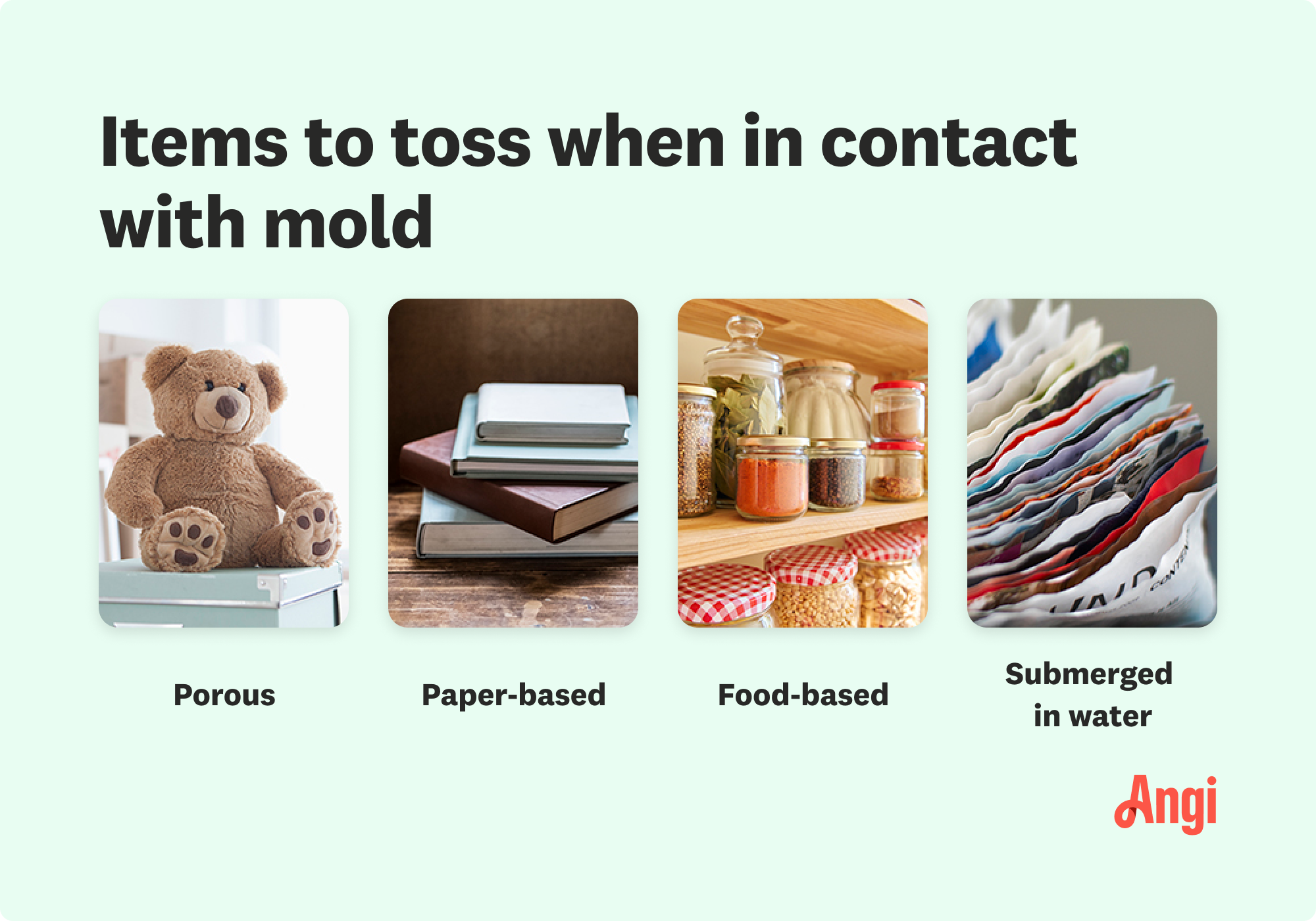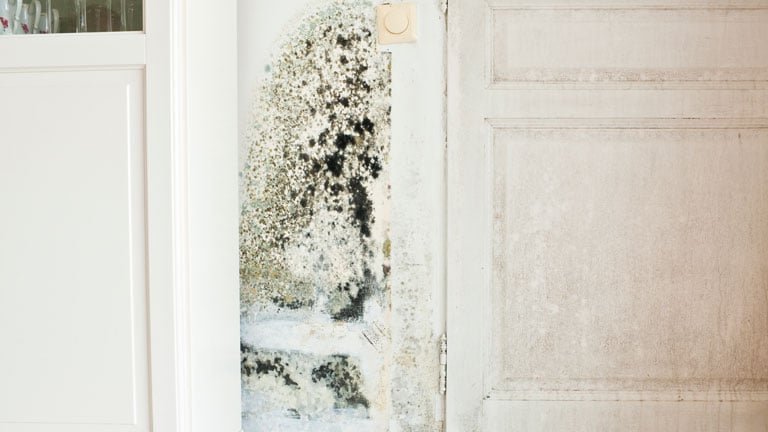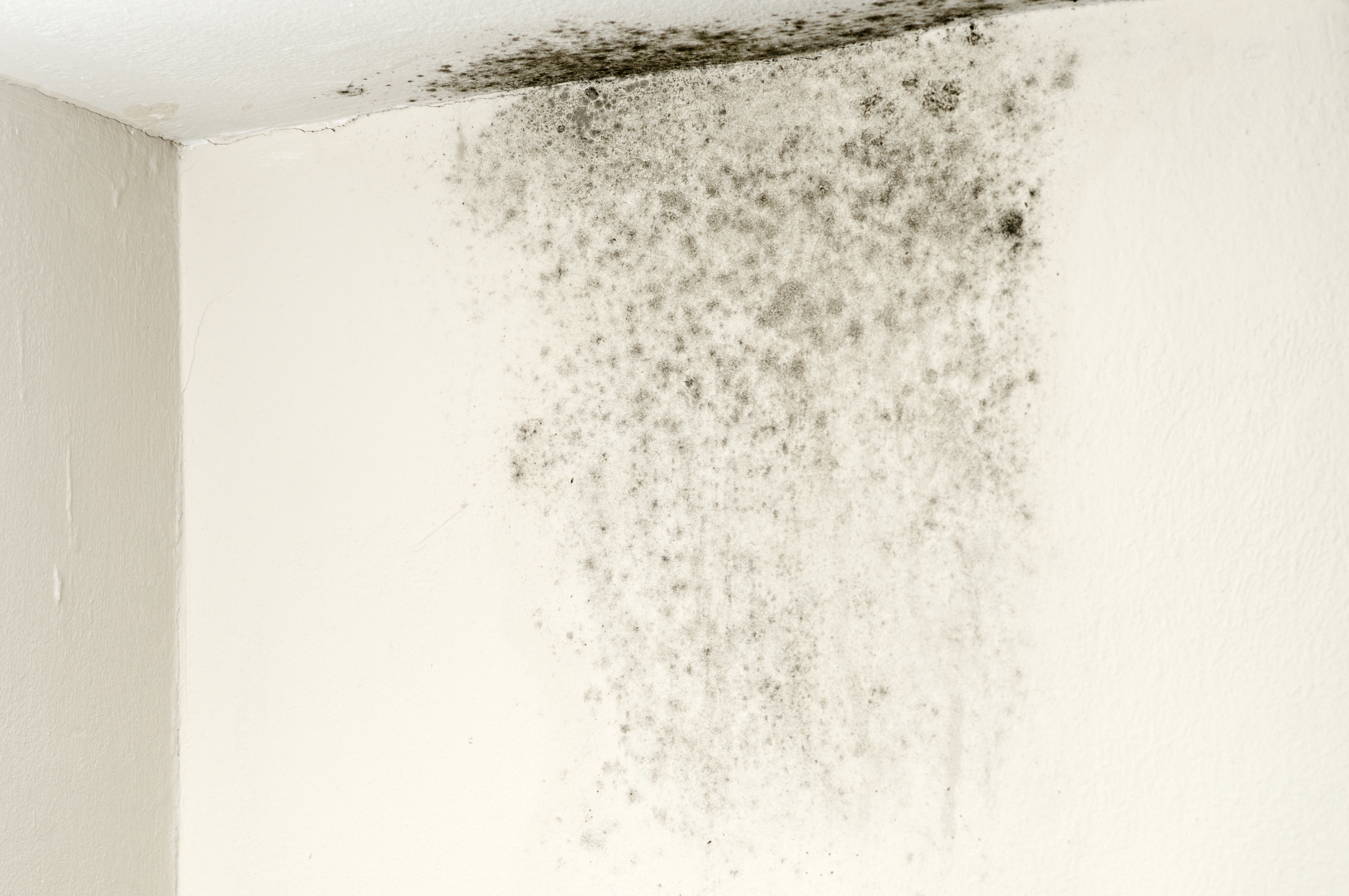
Mold remediation cost can quickly escalate. But if you have mold in your home, the cost for mold remediation is worth it.
When mold damages your belongings, it's usually better to be safe than sorry


You should throw away porous materials exposed to mold, such as carpet, bedding, stuffed animal toys, and cardboard.
If items used to prepare food have been exposed to mold, it’s safest to discard them, along with anything that’s been submerged in water.
Most people can adequately clean and keep solid wood furniture that’s been exposed to mold, as well as items made of plastic, metal, ceramic, or glass.
After properly disinfecting and cleaning the mold, you might be able to keep certain fabric items.
Mold growth in your home is a serious issue that can damage your belongings and compromise your health. Typically, you wouldn’t hesitate to toss anything that’s been damaged by green stuff, but what about the old box of family photos?
After mold exposure, some personal items may be safe to keep with a good cleaning, while others can pose a health risk if kept around. This guide will help you sort out everything after mold remediation.
There are surely some things you need to throw out after they’ve been exposed to mold, but you don’t have to throw everything away. Some items are more durable and can be cleaned.
Here are some guidelines to follow if your home has (or had) mold damage.
Belongings that are:
Porous: carpet, cardboard, upholstery, mattresses, bedding, and stuffed animals
Made from paper: documents, books, photo albums, etc.
Food-based or used to prepare food: basically, anything you’d eat or items that come in contact with food
Submerged in water: items that have soaked are at higher risk for deep mold absorption and should be thrown out
Items made of plastic, metal, ceramic, or glass
Fabric that’s been cleaned well and disinfected
Solid wood furniture
Electronics and electronic appliances**
If in doubt, you can always ask a local mold remediation specialist whether an item can be salvaged after mold exposure.
**Appliance coils are very susceptible to harboring mold. If you’re removing mold from your home by yourself, be sure to inspect all areas of your devices.


Unfortunately, mold releases toxins that create free radicals (unstable atoms that damage cells) when ingested by humans, which can lead to a bunch of different health issues. In fact, ingesting certain types of mold (including black mold) can make you very sick or even be life-threatening.
This is why many toxicologists recommend homeowners treat moldy belongings ASAP. Damaged items should be thrown away without question, and items that are easy to replace or inexpensive (i.e. clothes, food) should be tossed as a precautionary measure. Basically, it’s better to be safe than sorry.
Additionally, moldy items left in your home could spread to other parts of your house, like your walls and flooring. This could lead to a bigger mold infestation that decreases your home value.
If some of your household items have been exposed to mold, you’ll need to assess and address the situation as quickly as possible. Some items are salvageable if cleaned correctly, while others are not.
Whether you need to throw away moldy clothes depends on the severity of the mold. If the mold is deeply embedded in your clothes, it may be difficult to remove completely. If you catch mold early and it’s just a light patch, many clothes can be cleaned and saved.
To clean washable items, pretreat them with non-ammonia detergent, and then wash them at the highest temperature with detergent and the appropriate bleach. Check the label on your product to determine the highest wash temperature.
Since dishes and silverware are made from non-porous materials, you won’t need to throw them out in most cases. But you should throw away moldy dishes if there’s mold in openings, cracks, or grooves in your dishware. It’s impossible to remove mold spores from those areas, and it would be dangerous to continue using them.
Otherwise, you can clean moldy dishes and silverware by first soaking them in a white vinegar solution. Then scrub them thoroughly with hot water and dish soap, using the hottest temperature you’re comfortable with.
Cleaning furniture items after mold exposure depends on its material type. Follow these steps if your hard-surfaced item is made of laminate, wood, veneer, steel, resin, or bamboo:
Start by removing mold spores with a damp cloth and mild non-phosphate detergent.
Dry thoroughly but not in direct sunlight.
If the mold was caused by sewer water, disinfect your furniture piece using a mixture of bleach and water.
For paper materials, first make sure the item is completely dry. Removing mold from a wet or damp surface could smear the text. You can do this by inserting paper towels between each page and using a fan to create air circulation. Once dry, use a damp cloth or soft brush with denatured alcohol. Gently try to wipe off the mold or mildew.
For very important documents, like a passport, damage from water and mold may require a replacement (regardless of attempts to repair it). If you find an important document is too worn, ripped, or warped after drying, it will be a better use of time to order a new one.
It’s essential to clean your leather clothing or furniture as soon as you discover its exposure to mold. Use a clean cloth or a soft-bristled brush to remove the mold spores. Then, clean it with a solution of water and non-phosphate detergent before wiping it off and drying thoroughly. You can also wipe down items with a mixture of water and isopropyl alcohol. Finally, dry the leather items thoroughly and then use a leather conditioner.
Getting rid of moldy items requires a little extra care to keep mold spores from spreading. Here are some tips to throw away the contaminated items safely:
Place items in plastic bags first.
For large items, like carpets or mattresses, wrap them in plastic sheeting.
Wear protective gear, including a mask and gloves.
Check local disposal guidelines since, in some areas, these items may need to be handled as hazardous waste.
Clean the area where the items were stored with a mixture of water and vinegar.
Call in a professional for large items or extensive mold.
After the professional mold-removal team finishes the remediation process, it’s time to step back in and evaluate the status of your home. Follow any recommendations provided by your mold remediation technician about cleaning or handling items with mold exposure.
For best results and peace of mind, hire a professional mold removal service near you that has the necessary experience cleaning homes with mold exposure. This step is especially important for homes with mold damage caused by sewage or contaminated water.
Several store-bought cleaners are effective at cleaning mold. Most of them use sodium hypochlorite, the active ingredient in bleach. Vinegar is another effective product for removing mold, especially if you're treating mold in a small, unventilated area. You can also mix vinegar with baking soda to remove more stubborn mold growth.
For light mold growth, you can spray the affected area with a solution of water and mild detergent
For larger patches of mold in a better-ventilated room, you can make a homemade cleaning solution by mixing one cup of store-bought bleach with one gallon of water.
From average costs to expert advice, get all the answers you need to get your job done.

Mold remediation cost can quickly escalate. But if you have mold in your home, the cost for mold remediation is worth it.

The cost of a mold inspection might seem high, but it’s one of the best investments you can make for your health and home. Read on to learn cost-saving tips.

Mold poses a constant threat to homeowners as it can grow in many environments. Learn how to identify types of mold to prevent health and structural issues.

When you see some sort of growth in a damp area of your home, you want to know the differences between mildew and mold. Learn more about these two types of fungi.

Mold on wood is a common problem that needs to be removed to prevent health hazards and structural damage. Use this guide to learn how to kill mold on wood.

Learn how to tell black mold from black mildew by their look, location, and texture so you can clean it up yourself or know when to call in a pro.